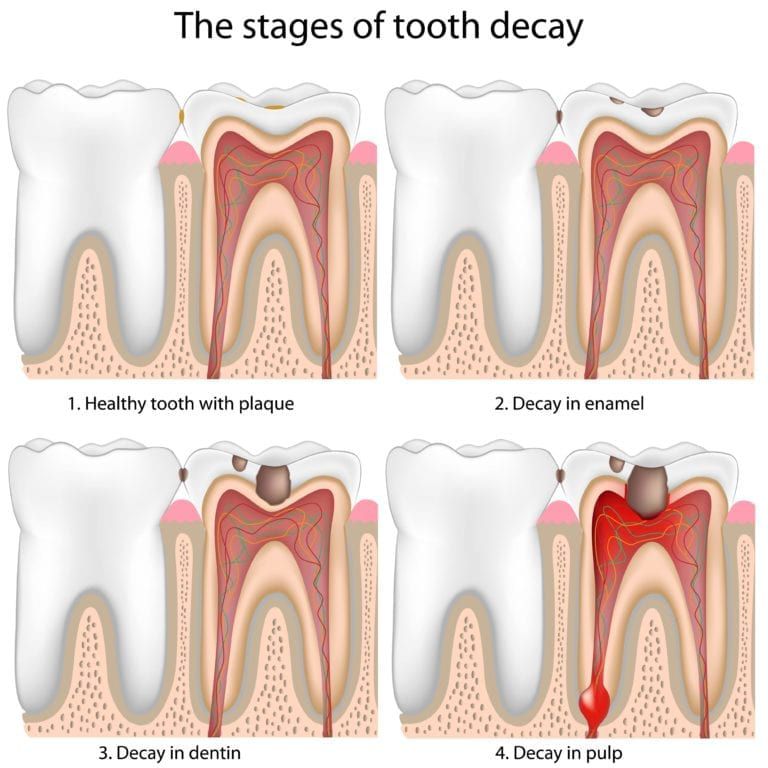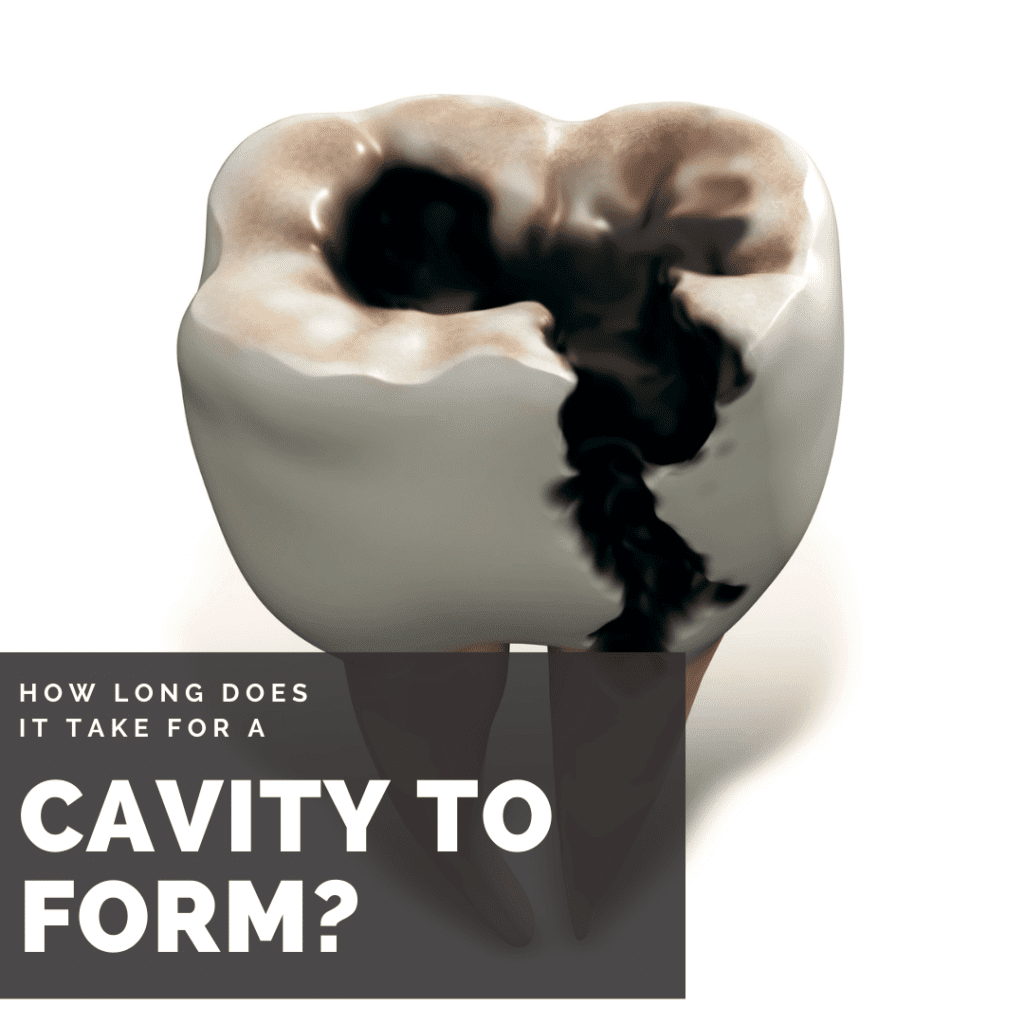Did you know that cavities are the second most common condition behind the common cold? Unlike the common cold, however, cavities take much longer to develop. Have you ever considered just how long it takes for a cavity to form? Even if you have never wondered this before, it is an important thing to know for the sake of maintaining your oral health. As with most things that pertain to your oral health, there is no specific answer of how long it takes a cavity to form. However, by learning more about what cavities are and how they form, we can get a better idea of how long it takes for them to develop.

What are cavities?
Cavities are areas of the tooth that have been eroded by decay. In the simplest sense, cavities are holes in your teeth. They form when the bacteria that reside in dental plaque feed on sugars from foods and beverages, and then produce an acidic waste product that damages the tooth. There are three types of cavities that are characterized by where they are located:
- Pit and Fissure: this type of cavity forms in the grooves on the chewing surface of molars and premolars. This is the most common type of cavity since it is easy for plaque and food debris to accumulate within these grooves.
- Root: since the tooth roots are normally covered by the gums, they have a thinner layer of enamel than the rest of the tooth. However if the gums recede and expose the tooth roots, then it is likely that cavities can form on the tooth roots.
- Smooth-surface: these cavities form on the smooth-surfaces of the teeth. They are often slow to develop and are not nearly as common as the other two types of cavities.
How do cavities form?
Cavities form when the acids from bacteria damage the enamel. However, this does not occur all at once. Instead, cavities form in a series of stages from stage 1 to stage 5:

Stage 1: Demineralization
Tooth enamel is the hardest substance in the human body because it is primarily composed of minerals. Over time, the acids from bacteria cause enamel to lose its minerals and become weaker. Demineralization is seen as white spots on the teeth and it is the first sign that a cavity may form. In some cases if demineralization is caught early, it can be reversed with fluoride treatments.
Stage 2: Enamel Decay
After the tooth has been demineralized, then the acids from the bacteria will start to erode the enamel. This results in small to medium cavities, or holes, that form in the enamel layer only. Once a cavity has formed, it must be treated with a dental filling to prevent it from progressing.
Stage 3: Dentin Decay
Once the bacteria have eroded through the enamel, they will reach the dentin layer underneath the enamel. At this point, it is not uncommon to experience pain or tooth sensitivity caused by the cavity. Additionally, it is likely that the cavity has grown in size once it reaches the dentin layer. This means that it will need to be restored with larger fillings like inlays or onlays, as well as a possible crown. It is also important to note that cavities progress faster once they have reached the dentin layer.
Stage 4: Pulp Decay
The dental pulp is the innermost layer of the tooth just below the dentin that is composed of blood vessels and the tooth nerve. When decay reaches the pulp layer, it causes a pulp infection known as pulpitis. At this point, most people experience tooth pain and sensitivity due to the inflammation from the infection. In order to save the tooth, a root canal must be performed to remove the infection from the inside of the tooth. The tooth is then restored with a dental crown.
Stage 5: Abscess
An untreated pulp infection can quickly grow down through the root canals inside the tooth roots. When this happens, it causes an extremely painful abscess to form at the base of the tooth root. While a root canal may be able to save the tooth, many teeth are extracted once they reach this stage of decay.
How Long Does it Take?
Now that we have looked deeper into what cavities are, where they form, and how they form, we can get into how long it takes them to form. Although there is no standard answer, most cavities tend to take years to form, while some can form in a matter of months. The reason for this discrepancy is that there are a few different factors that influence the speed at which a cavity develops.
One factor that influences how long it takes a cavity to develop is location. This is because a cavity will form faster in areas that have more plaque and bacteria since more damage is being done. Additionally, how deep the cavity is also plays a part in how fast it will progress. Stage 1 and 2 cavities take longer to develop since the enamel is extremely strong. However, once a cavity has reached stage 3 it develops much faster since it is much easier to corrode the dentin and pulp layers.
Another thing that affects how long it takes a cavity to form is how much sugar you consume on a daily basis. Sugar is the primary food source that bacteria use to reproduce and produce acidic waste that destroys enamel. This means that people who consume more sugar are more likely to have cavities that grow faster, while those that watch their sugar intake tend to have cavities that grow more slowly.
Finally, your oral hygiene plays an important role in how long it takes a cavity to develop. Brushing, flossing, and regular dental cleanings are important ways to remove excess plaque and bacteria from the teeth. People who brush twice a day, floss daily, and who attend dental cleanings twice a year are less likely to develop cavities and more likely to catch them in their early stages. Conversely, people who skip brushing, flossing, or dental appointments are at an increased risk for cavities that grow faster and become more serious.



